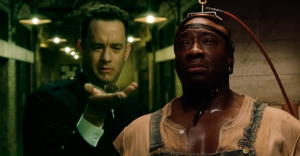Belfast: Why Kenneth Branagh’s Film Changes From Black & White To Color

Warning: This post contains minor spoilers for Belfast.
Belfast is a period piece, but there are reasons why Kenneth Branagh’s film changes from black and white to color on several occasions. Written and directed by Branagh, Belfast starts off in color before transitioning to black and white for the remainder of the film. However, the film retains pops of color throughout.
Set in 1969, Belfast follows the story of Buddy (Jude Hill), a nine-year-old living with his family — mother (Caitríona Balfe), father (Jamie Dornan), grandfather (Ciarán Hinds), grandmother (Judi Dench), and brother Will (Lewis McAskie) — in the eponymous Northern Island city. Buddy lives a regular, happy life that is markedly changed when The Troubles begin, an ethno-nationalist conflict between the unionists (who were largely Protestants) and the nationalists (who were primarily Roman Catholics) that lasted for 30 years. As Buddy continues living a life balanced by a dose of joy and fear, his family must decide whether they should stay or leave Belfast.
Belfast is a semi-autobiographical account of Branagh’s past and the decision to shoot the film in black and white is reflective of his childhood being revisited through a filtered lens. The use of color in the film is distinct because it’s only employed sparingly and to make a distinction between the past and the present. The beginning of Belfast features several shots of the city in the present day, with Branagh highlighting the streets, neighborhoods, and the general beauty of the location in various shades. The end of the film also reverts back to color so the audience can get a sense of the city after decades of conflict, still persevering despite everything. It elevates the dedication the director makes to those who left Belfast, those who stayed, and those who were lost, all the more poignant and striking as the film leaves the memories (and the black and white cinematography that goes with it) behind.

Considering Belfast is also a film that sees reality through the memory and feelings of a nine-year-old, Branagh keeps the films Buddy and his family watch throughout — including Chitty Chitty Bang Bang and High Noon — in color. This highlights how Buddy sees the fantastical world of the movies as a brief escape, with the films maintaining their pop of color to contrast the imaginative with the reality of life in Belfast. While the black and white cinematography keeps Belfast tethered to the past, providing a sense of closeness and vulnerability to the events of the film, the bright colors that appear at various points throughout bring viewers back to the present in many ways, pulling them out of Buddy’s perspective for a bit.
The changes from black and white to color amplifies Belfast and creates a distinguished look and feel to the film’s story, illuminating the differences between past and present, reality and fantasy. In many ways, this allows the film to live in different time periods despite Belfast’s 1969 setting. As specific as the film is, the shift to color for things not related to Buddy’s family life and the community at large keeps the story contained as a trip down memory lane that is punctuated by occasional reminders of when Belfast took place.
About The Author


















